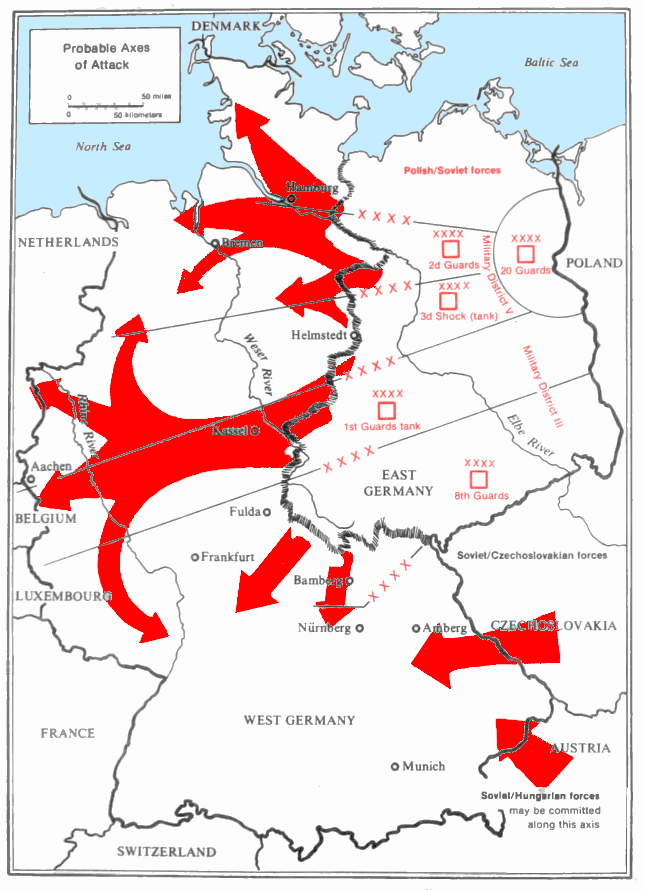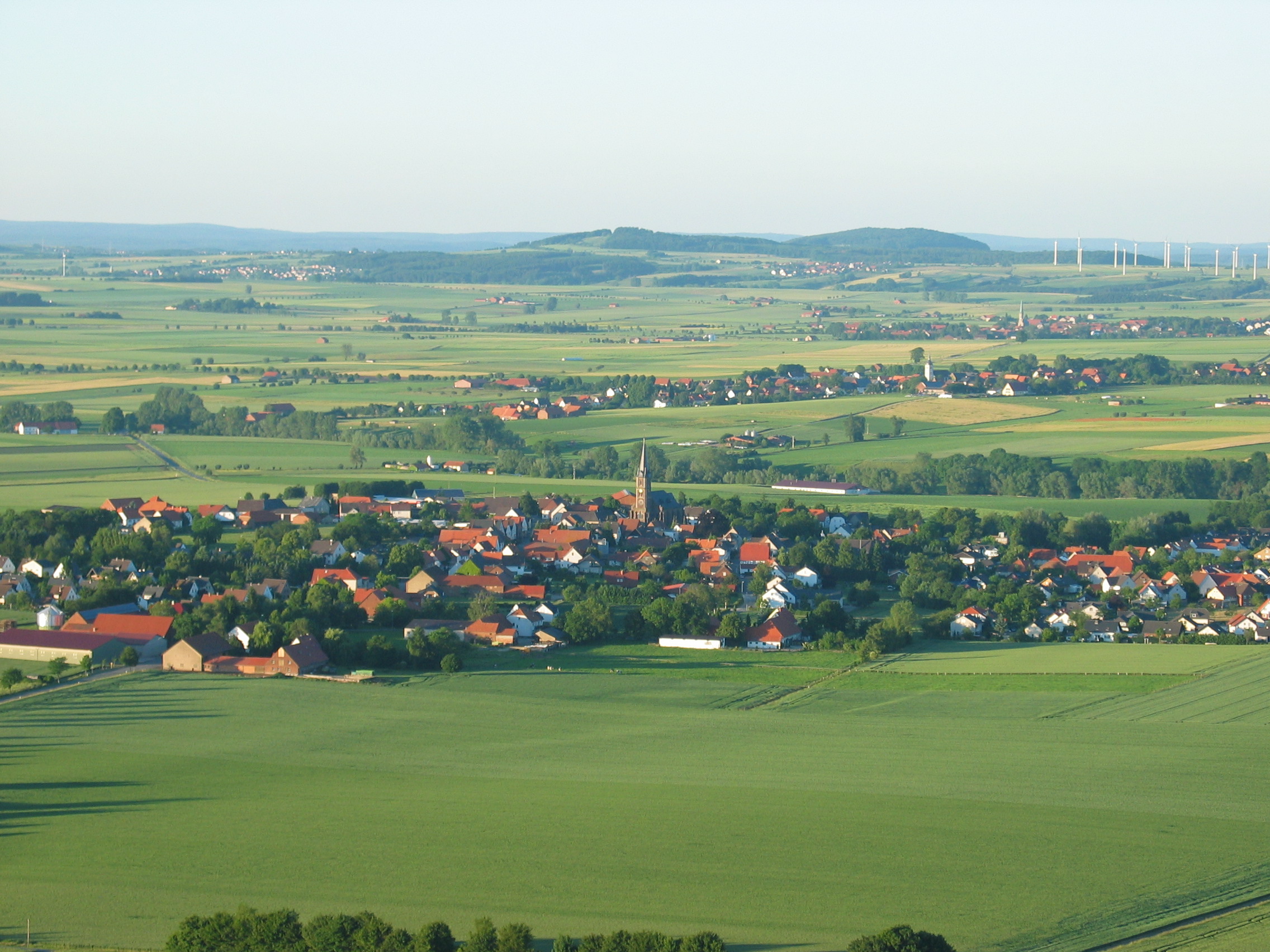|
Hagenhufendorf
A ''Hagenhufendorf'' (German: also ''Bachhufendorf'', ''Hagenhufensiedlung'' or ''Hägerhufensiedlung'') is an elongated settlement, similar to a ''Reihendorf'', laid out along a road running parallel to a stream, whereby only one side of the road has houses, whilst on the opposite side are the hides (''Hufen''), the handkerchief-shaped farmer's fields of medieval origin, about 20 to 40 morgens in area. Name This German term is probably derived from ''Hagenrecht'' ("hedging right"), i.e. the owner had a right to enclose the land he used. This went even further for the ''Hägerhufensiedlungen'', where there was a ''Hägerjunker'' in charge and special courts dealing with enclosure issues, the ''Hägergerichte''. Description The ''Hagenhufensiedlung'' was a form of planned settlement typical of the High Middle Ages that consisted of individually owned strips of land that were strung together in a line. The hides were as wide as the farmstead, but could be several hundred metres ... [...More Info...] [...Related Items...] OR: [Wikipedia] [Google] [Baidu] |
Hagenhufendorf
A ''Hagenhufendorf'' (German: also ''Bachhufendorf'', ''Hagenhufensiedlung'' or ''Hägerhufensiedlung'') is an elongated settlement, similar to a ''Reihendorf'', laid out along a road running parallel to a stream, whereby only one side of the road has houses, whilst on the opposite side are the hides (''Hufen''), the handkerchief-shaped farmer's fields of medieval origin, about 20 to 40 morgens in area. Name This German term is probably derived from ''Hagenrecht'' ("hedging right"), i.e. the owner had a right to enclose the land he used. This went even further for the ''Hägerhufensiedlungen'', where there was a ''Hägerjunker'' in charge and special courts dealing with enclosure issues, the ''Hägergerichte''. Description The ''Hagenhufensiedlung'' was a form of planned settlement typical of the High Middle Ages that consisted of individually owned strips of land that were strung together in a line. The hides were as wide as the farmstead, but could be several hundred metres ... [...More Info...] [...Related Items...] OR: [Wikipedia] [Google] [Baidu] |
Rodewald
Rodewald is an agricultural village in the district of Nienburg, Lower Saxony and is locally administrated by Steimbke. At in length, Rodewald is considered the second longest village in Lower Saxony, Germany and is split into three farming communities or peasantries, known simply as; Lower, Middle and Upper Farming Community (obere, mittlere and untere Bauerschaft). It is situated approximately to the north of the federal state capital, Hanover, south of Germany's second largest city, Hamburg and belonged until the administrative and territorial reforms of 1974, to the district of Neustadt am Rübenberge. History Rodewald is first mentioned in historical records during the initial quarter of the 13th century, after which the Bishop of Minden requested that the Earl of Wölpe establish a settlement. Through a systematic clearing of forests in the northern area, which is identified today as ''Untere Bauernschaft'', the village was created and is ultimately where the name ste ... [...More Info...] [...Related Items...] OR: [Wikipedia] [Google] [Baidu] |
Reihendorf
The ''Reihendorf'' ("row village" or ribbon development, plural: ''Reihendörfer'') or ''Hufendorf'' ("oxgang village") is the name used of a particular form of linear settlement in German-speaking countries that is characterized by rows of houses situated along a linear object such as a riverbank, road, valley, or stream.Dickinson (1964), pp. 146-147. Description ''Reihendörfer'' may consist of a one or two rows of houses or farmsteads; the latter being arranged either side of the village street. The farmland associated with each dwelling is adjacent to it, which has the advantage of saving time and reducing the effort involved in transport. The farm can be worked just outside the farmyard or within it e.g. manure can be readily transported from the cowsheds to the fields and the harvest can be easily brought in to the barns. The farmers also have better oversight of their land. A ''Reihendorf'' does not usually have common land. Types Specific forms of ''Reihendorf'' includ ... [...More Info...] [...Related Items...] OR: [Wikipedia] [Google] [Baidu] |
Schaumburg Forest
The Schaumburg Forest (german: Schaumburger Wald) is a wooded region, about with an area of around 40 km², in the district of Schaumburg in the German federal state of Lower Saxony. Location The Schaumburg Forest lies immediately east of the Lower Saxony's state border with North Rhine-Westphalia in the northwestern part of the district of Schaumburg not far east of the River Weser, south of the Rehburg Hills and northwest of the Mittelland Canal. It extends from Wölpinghausen in the north, to Pollhagen and Meerbeck in the east (on the far side and east of the county town of Stadthagen and the town of Obernkirchen), to Bückeburg in the south, to the town of Minden in the southwest and the town of Petershagen and municipality of Wiedensahl in the west. To the north it almost borders, with the Rehburg Hills, on the district of Nienburg. The Schaumburg Forest, which is 19.5 km long and up to 4 km wide, lies on the North German Plain at between about 45 and ; ... [...More Info...] [...Related Items...] OR: [Wikipedia] [Google] [Baidu] |
Stadthagen
Stadthagen () is the capital of the district of Schaumburg, in Lower Saxony, Germany. It is situated approximately 20 km east of Minden and 40 km west of Hanover. The city consists of the districts Brandenburg, Enzen-Hobbensen, Hörkamp-Langenbruch, Krebshagen, Obernwöhren, Probsthagen, Reinsen and Wendthagen-Ehlen. Earlier, there were also the districts Habichhorst, Bruchhof, Blyinghausen, Enzen and Hobbensen. Stadthagen is located on the German Timber-Frame Road. History Count Adolf III of Holstein created a new settlement at the foot of the Bückeberg around 1224. Its site near the Hellweg route testifies to his strategic and commercial wisdom. After the successful clearances of the Dülwald forest around 1224, a new settlement by the name of ''indago comitis'' (the count's enclosure - the same name as The Hague) was first recorded in 1244 when it was described as a city and fort. In 1287 the town changed its name to Grevenalveshagen (Count Adolf's enclosure) and it ... [...More Info...] [...Related Items...] OR: [Wikipedia] [Google] [Baidu] |
Central Uplands
The Central UplandsDickinson (1964), p.18 ff. (german: die MittelgebirgeN.B. In German die ''Mittelgebirge'' (plural) refers to the Central Uplands; das ''Mittelgebirge'' refers to a low mountain range or upland region (''Mittel'' = "medium" and ''-gebirge'' = "range").) is one of the three major natural regions of Germany. It stretches east to west across the country. To the north lies the North German Plain or Northern Lowland; to the south, the Alps and the Alpine Foreland. Formation The German Central Uplands, like the Scandinavian and British mountain ranges and the Urals, belong to the oldest mountains of Europe, even if their present-day appearance has only developed relatively recently. In the Carboniferous, i.e. about 350 million years ago, Variscan mountain ranges were formed in central Europe by the uplifting caused by tectonic plate collision. Immediately after their formation the erosion of the mountains began under the influence of exogenous processes during the ... [...More Info...] [...Related Items...] OR: [Wikipedia] [Google] [Baidu] |
North German Plain
The North German Plain or Northern Lowland (german: Norddeutsches Tiefland) is one of the major geographical regions of Germany. It is the German part of the North European Plain. The region is bounded by the coasts of the North Sea and the Baltic Sea to the north, Germany's Central Uplands (''die Mittelgebirge'') to the south, by the Netherlands to the west and Poland to the east. In the west, the southern boundary of the North German Plain is formed by the Lower Saxon Hills: specifically the ridge of the Teutoburg Forest, the Wiehen Hills, the Weser Hills and the Lower Saxon Börde, which partly separate it from that area of the Plain known as the Westphalian Lowland. Elements of the Rhenish Massif also act a part of the southern boundary of the plain: the Eifel, Bergisches Land and the Sauerland. In the east the North German Plain spreads out beyond the Harz Mountains and Kyffhäuser further to the south as far as the Central Saxon hill country and the foothills of the Ore M ... [...More Info...] [...Related Items...] OR: [Wikipedia] [Google] [Baidu] |
Börde
A ''börde'' (plural: ''börden'') is a region of highly fertile lowland in North Germany, a "fertile plain". These landscapes often cover great areas and are particularly important for arable farming on account of their rich soils. These regions coincide closely with areas of flat, fertile loess soil and few trees. ''Börden'' are found in Germany, especially in the North German Old Drift region on the northern edges of Central Uplands. The resulting black earth soils are some of the best soils in Germany. Etymology These landscapes are restricted to, or concentrated on, those regions where the Eastphalian and Westphalian dialects are spoken. There are two opposing explanations for the name. According to one, the term is connected with the Old High German word ''giburida'' ("judicial district") or the plattdeutsch word ''bören'' ("to bear"). The ''börde'' in this context is seen as a district in which the inhabitants had to "bear" public charges, i.e. it was effectivel ... [...More Info...] [...Related Items...] OR: [Wikipedia] [Google] [Baidu] |
Eschershausen
Eschershausen is a municipality in the district of Holzminden, in Lower Saxony, Germany. It is situated approximately 20 km northeast of Holzminden, and 50 km south of Hanover. Eschershausen was the seat of the former ''Samtgemeinde'' ("collective municipality") Eschershausen. Personalities Honorary citizen * Wilhelm Raabe (1831-1910), German writer, honorary citizenship in 1901 * Hans Scheibert (1887-1969), founder of the Deutsche Schlauchbootfabrik (Dinghy factory), (DSB), honorary citizenship in 1967 Sons and daughters of the city * Wilhelm Raabe Wilhelm Raabe (; September 8, 1831November 15, 1910) was a German novelist. His early works were published under the pseudonym of Jakob Corvinus. Biography He was born in Eschershausen (then in the Duchy of Brunswick, now in the Holzminden Distr ... (1831-1910), German writer * Georg Bode (1838-1910), German jurist, naturalist and historian References Holzminden (district) Duchy of Brunswick {{Ho ... [...More Info...] [...Related Items...] OR: [Wikipedia] [Google] [Baidu] |
Lokator
The ''lokator'' (lat. ''locator'': landlord, land allocator, from Latin to allocate, rent, establish, settle or locate; also ''magister incolarum''; in Mecklenburg and Pomerania also or , similar to the ''Reutemeister'' in South Germany) was a medieval sub-contractor, who was responsible to a territorial lord or landlord for the clearing, survey and apportionment of land that was to be settled. In addition, he hired settlers for this purpose, provided their means of subsistence during the transitional period (e.g. during the clearing of the land) and made materiel and implements available, such as seed, draught animals, iron ploughs, etc. He thus played a key role during the establishment of new towns and villages, as well as the clearing of uncultivated land during the phase of internal colonisation Internal may refer to: * Internality as a concept in behavioural economics * Neijia, internal styles of Chinese martial arts * Neigong or "internal skills", a type of exercise in med ... [...More Info...] [...Related Items...] OR: [Wikipedia] [Google] [Baidu] |
Kreis Lippe
Lippe () is a ''Kreis'' (district) in the east of North Rhine-Westphalia, Germany. Neighboring districts are Herford, Minden-Lübbecke, Höxter, Paderborn, Gütersloh, and district-free Bielefeld, which forms the region Ostwestfalen-Lippe. The district of Lippe is named after the Lords of Lippe, who originally lived on the river Lippe and founded Lippstadt there, and their Principality of Lippe. It was a state within the Holy Roman Empire and retained statehood until 1947, when it became a district of North Rhine-Westphalia. History The Lippe district nearly covers the same area as the historic county of Lippe. The first mention of this country was in 1123; it grew in power slowly in the following centuries. In 1528 it became a county, in 1789 it was elevated to a principality. Unlike many other countries of the Holy Roman Empire in the area, Lippe kept its independence in the Napoleonic era, and thus wasn't incorporated into Prussia afterwards. It was one of the smaller member ... [...More Info...] [...Related Items...] OR: [Wikipedia] [Google] [Baidu] |





_b_469.jpg)

